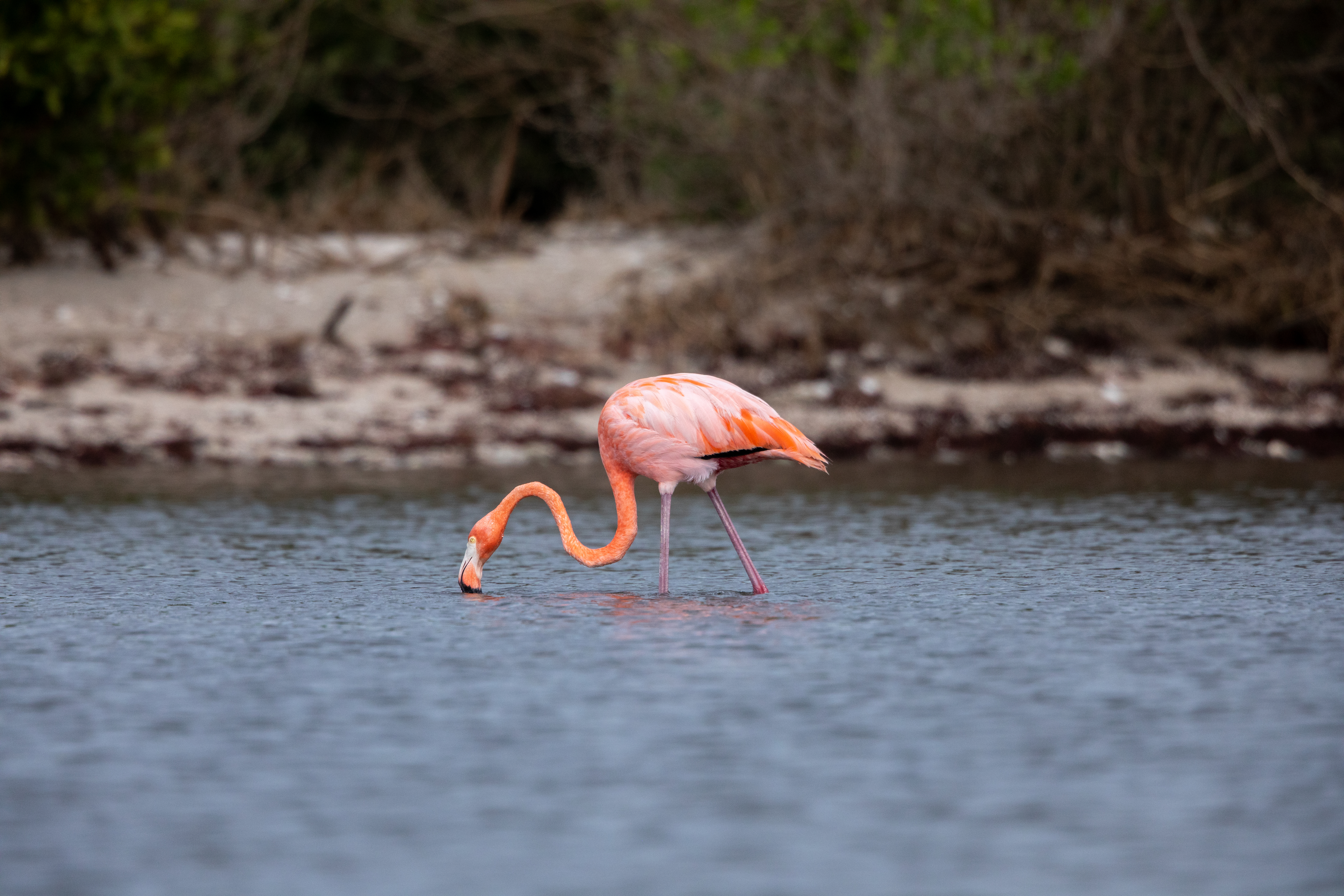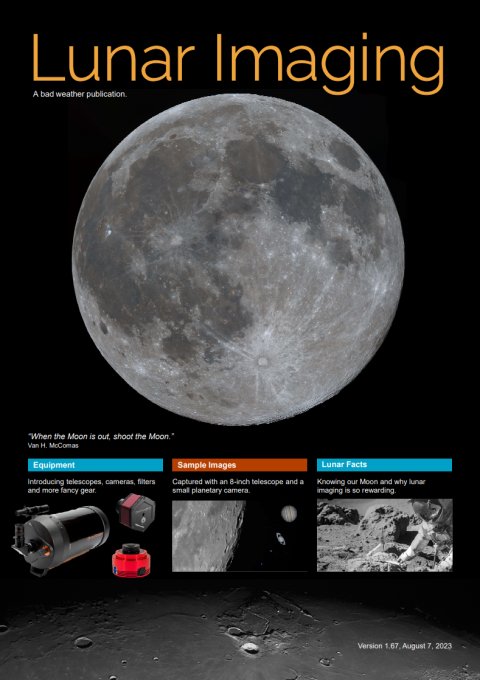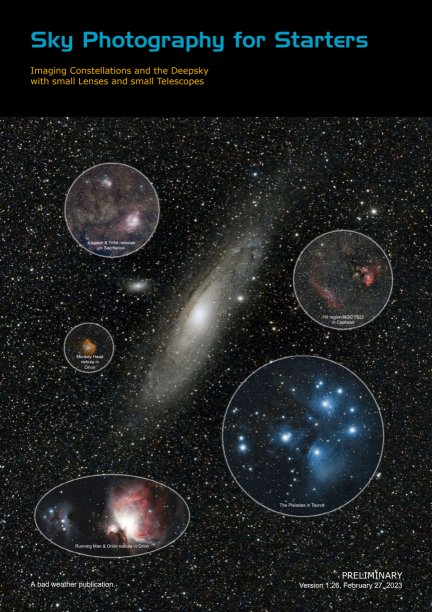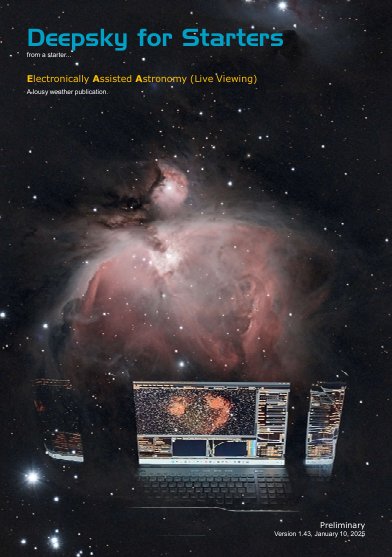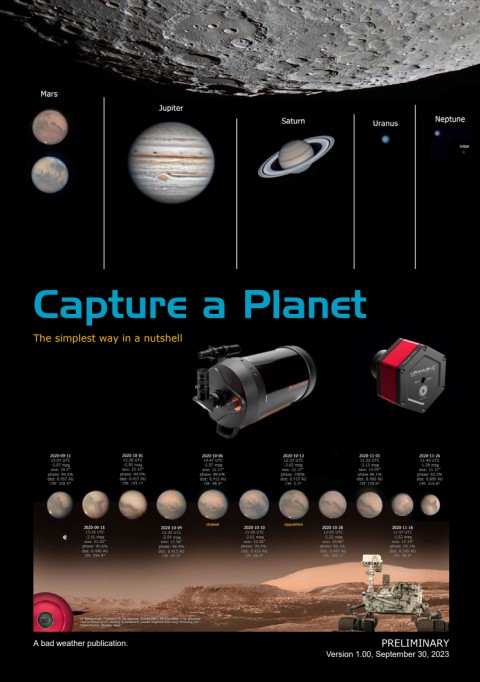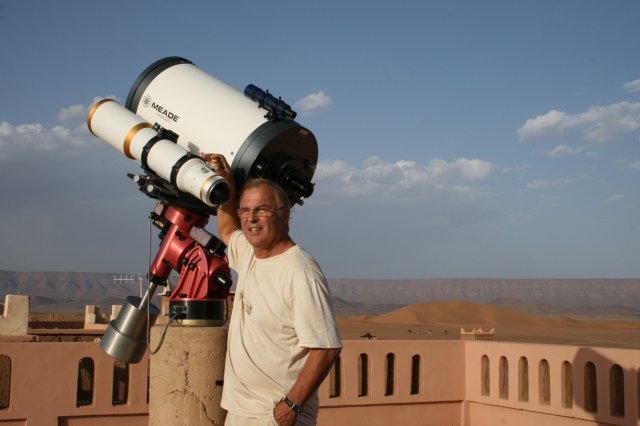Astronomical database with 3D simulations, visualizations, computations, review, articles, and more.
This website is not tailored to smartphones or other hand-held devices.

Sun & Moon Today
Current asteroid count is 1,351,400
Observable comet count is 1122
Current exoplanet count is 5626
Current longitude II of the GRS is 53°
Today Monitor
Planet Oppositions
Mars: January 16, 2025
Jupiter: December 7, 2024
Saturn: September 8, 2024
Uranus: November 17, 2024
Neptune: September 31, 2024
Greatest Elongation of Venus
Evening: January 10, 2025 at 47.2°E
Morning: June 1, 2025 at 45.9°W
Greatest Elongation of Mercury
Evening: December 4,2023 at 21.3°E
Morning: January 12, 2024 at 23.5°W
Evening: March 24, 2024 at 18.7°E
Morning: May 9, 2024 at 26.4°W
Evening: July 22, 2024 at 26.9°E
Morning: September 5, 2024 at 18.1°W
Evening: November 16, 2024 at 22.5°E
Morning: December 25, 2024 at 22.0°W
Comets to look out for:
Super Moons (full) 2024
Wednesday, September 18
Thursday, October 17
given for 00:00 UT
In Longitude (negative is western)
| Date | Size | Age | Angle | Phase |
|---|---|---|---|---|
| 14 Aug 2024 | 30.51' | 9.53 | -6.644° |  |
| 15 Aug 2024 | 30.96' | 10.53 | -6.946° |  |
| 16 Aug 2024 | 31.45' | 11.53 | -6.807° |  |
| 27 Aug 2024 | 31.47' | 22.53 | 6.648° |  |
| 28 Aug 2024 | 31.09' | 23.53 | 6.822° |  |
| 29 Aug 2024 | 30.74' | 24.53 | 6.717° |  |
| 11 Sep 2024 | 30.44' | 7.92 | -7.081° |  |
| 12 Sep 2024 | 30.88' | 8.92 | -7.442° |  |
| 13 Sep 2024 | 31.38' | 9.92 | -7.388° |  |
| 14 Sep 2024 | 31.90' | 10.92 | -6.884° |  |
| 23 Sep 2024 | 32.03' | 19.92 | 6.983° |  |
| 24 Sep 2024 | 31.54' | 20.92 | 7.577° |  |
| 25 Sep 2024 | 31.07' | 21.92 | 7.769° |  |
| 26 Sep 2024 | 30.64' | 22.92 | 7.584° |  |
| 27 Sep 2024 | 30.28' | 23.92 | 7.067° |  |
| 09 Oct 2024 | 30.41' | 6.22 | -6.872° |  |
| 10 Oct 2024 | 30.80' | 7.22 | -7.260° |  |
| 11 Oct 2024 | 31.24' | 8.22 | -7.306° |  |
| 12 Oct 2024 | 31.73' | 9.22 | -6.971° |  |
| 21 Oct 2024 | 32.22' | 18.22 | 6.835° |  |
| 22 Oct 2024 | 31.69' | 19.22 | 7.618° |  |
| 23 Oct 2024 | 31.17' | 20.22 | 7.933° |  |
| 24 Oct 2024 | 30.69' | 21.22 | 7.796° |  |
| 25 Oct 2024 | 30.28' | 22.22 | 7.257° |  |
| 08 Nov 2024 | 31.20' | 6.47 | -6.417° |  |
| 19 Nov 2024 | 31.78' | 17.47 | 6.845° |  |
| 20 Nov 2024 | 31.27' | 18.47 | 7.271° |  |
| 21 Nov 2024 | 30.79' | 19.47 | 7.223° |  |
| 22 Nov 2024 | 30.36' | 20.47 | 6.738° |  |
In Latitude (negative is southern)
| Date | Size | Age | Angle | Phase |
|---|---|---|---|---|
| 11 May 2024 | 31.43' | 2.86 | -6.465° |  |
| 12 May 2024 | 30.97' | 3.86 | -6.734° |  |
| 13 May 2024 | 30.54' | 4.86 | -6.649° |  |
| 26 May 2024 | 31.26' | 17.86 | 6.556° |  |
| 27 May 2024 | 31.51' | 18.86 | 6.627° |  |
| 08 Jun 2024 | 31.21' | 1.47 | -6.565° |  |
| 09 Jun 2024 | 30.83' | 2.47 | -6.570° |  |
| 22 Jun 2024 | 31.42' | 15.47 | 6.419° |  |
| 23 Jun 2024 | 31.72' | 16.47 | 6.548° |  |
| 05 Jul 2024 | 31.15' | 28.47 | -6.475° |  |
| 06 Jul 2024 | 30.85' | 0.04 | -6.542° |  |
| 20 Jul 2024 | 31.77' | 14.04 | 6.576° |  |
| 01 Aug 2024 | 31.01' | 26.04 | -6.516° |  |
| 02 Aug 2024 | 30.73' | 27.04 | -6.622° |  |
| 16 Aug 2024 | 31.45' | 11.53 | 6.680° |  |
| 17 Aug 2024 | 31.94' | 12.53 | 6.611° |  |
| 28 Aug 2024 | 31.09' | 23.53 | -6.608° |  |
| 29 Aug 2024 | 30.74' | 24.53 | -6.758° |  |
| 30 Aug 2024 | 30.43' | 25.53 | -6.567° |  |
| 12 Sep 2024 | 30.88' | 8.92 | 6.748° |  |
| 13 Sep 2024 | 31.38' | 9.92 | 6.795° |  |
| 14 Sep 2024 | 31.90' | 10.92 | 6.467° |  |
| 24 Sep 2024 | 31.54' | 20.92 | -6.608° |  |
| 25 Sep 2024 | 31.07' | 21.92 | -6.837° |  |
| 26 Sep 2024 | 30.64' | 22.92 | -6.706° |  |
| 09 Oct 2024 | 30.41' | 6.22 | 6.695° |  |
| 10 Oct 2024 | 30.80' | 7.22 | 6.831° |  |
| 11 Oct 2024 | 31.24' | 8.22 | 6.620° |  |
| 21 Oct 2024 | 32.22' | 18.22 | -6.408° |  |
| 22 Oct 2024 | 31.69' | 19.22 | -6.763° |  |
| 23 Oct 2024 | 31.17' | 20.22 | -6.728° |  |
| 05 Nov 2024 | 30.24' | 3.47 | 6.535° |  |
| 06 Nov 2024 | 30.52' | 4.47 | 6.723° |  |
| 07 Nov 2024 | 30.84' | 5.47 | 6.580° |  |
| 18 Nov 2024 | 32.26' | 16.47 | -6.549° |  |
| 19 Nov 2024 | 31.78' | 17.47 | -6.638° |  |
| 03 Dec 2024 | 30.57' | 1.74 | 6.584° |  |
| 04 Dec 2024 | 30.83' | 2.74 | 6.475° |  |
| 16 Dec 2024 | 32.04' | 14.74 | -6.545° |  |
| 30 Dec 2024 | 30.69' | 28.74 | 6.543° |  |
| 31 Dec 2024 | 31.00' | 0.07 | 6.472° |  |
Source: NASA/GSFC
Lunar Calendar 2024
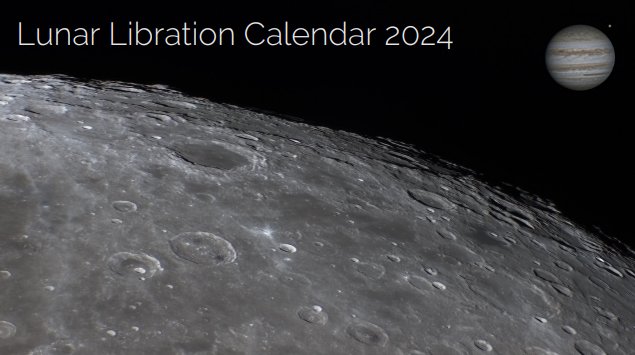 Lunar Libration Calendar2024 (PDF 11.2 MB)
Lunar Libration Calendar 2023 (PDF 3.3 MB)
Lunar Libration Calendar2024 (PDF 11.2 MB)
Lunar Libration Calendar 2023 (PDF 3.3 MB)
Latest STScI News Release
NASA's Roman Space Telescope Could Help Researchers Detect the Universe’s First StarsMay 09, 2024

An illustration of a star being torn apart by a black hole. To the right of center, there is a black sphere representing a black hole, surrounded by many thick wisps of light. To the left of it, there is a fuzzy, bright white object representing a star. The star has a tail of gas coming off its right, which is brightest near the star, but becomes grayer further away. This tail flows into the black hole’s right side and swirls around the black hole in a horizontal disk. The disk is thicker toward its center and more diffuse farther away. Material in the disk also appears to wrap around the top of the black hole. Above and below the black hole, there are purple rays of light that extend upward and downward in two broad cones. This scene sits amid a black backdrop of space with many dim, white stars in the background.
Source: Space Telescope Science Institute
Tonight's Sky
May Constellations
In May, we are looking away from the crowded, dusty plane of our own galaxy toward a region where the sky is brimming with distant galaxies. Locate Virgo to find a concentration of roughly 2,000 galaxies and search for Coma Berenices to identify many more. Keep watching for space-based views of galaxies like the Sombrero Galaxy, M87, and M64.
Source: hubblesite.org
“Tonight’s Sky” is a monthly video of constellations you can observe in the night sky. The series is produced by the Space Telescope Science Institute, home of science operations for the Hubble Space Telescope, in partnership with NASA’s Universe of Learning.
NASA Image of the Day
That's Refreshing
An American Flamingo takes a sip of water in the Indian River at Haulover Canal on Merritt Island on Thursday, Jan. 11, 2024. The American Flamingos are more common in Mexico and Cuba but the winds from Hurricane Idalia relocated them to Florida in September 2023. Kennedy Space Center in Florida shares a border with the Merritt Island National Wildlife Refuge where more than 310 species of birds inhabit the refuge.
Click to enlarge or show full screenFri, 10 May 2024 18:47 GMT
Source: www.nasa.gov
Asteroid Apophis
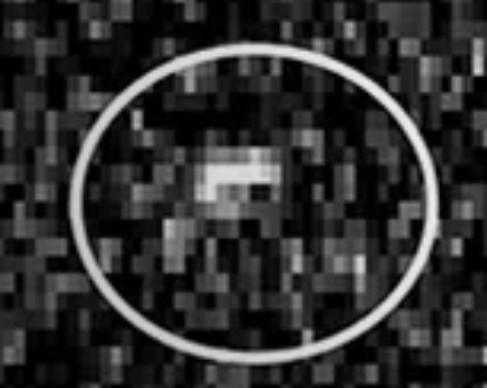
Image credit: NASA/JPL
2024-03-15 solar system
According to NASA, on April 13, 2029, Apophis will pass less than 20,000 miles (32,000 kilometers) from Earth's surface, closer than the distance of geosynchronous satellites. Although previously dubbed the Doomsday Asteroid, about 340 meters wide Apophis does not pose any danger of impact during close approach in 2029 as it will be visible with the unaided eye. Link to source 🔗
Moonquakes near Lunar South Pole
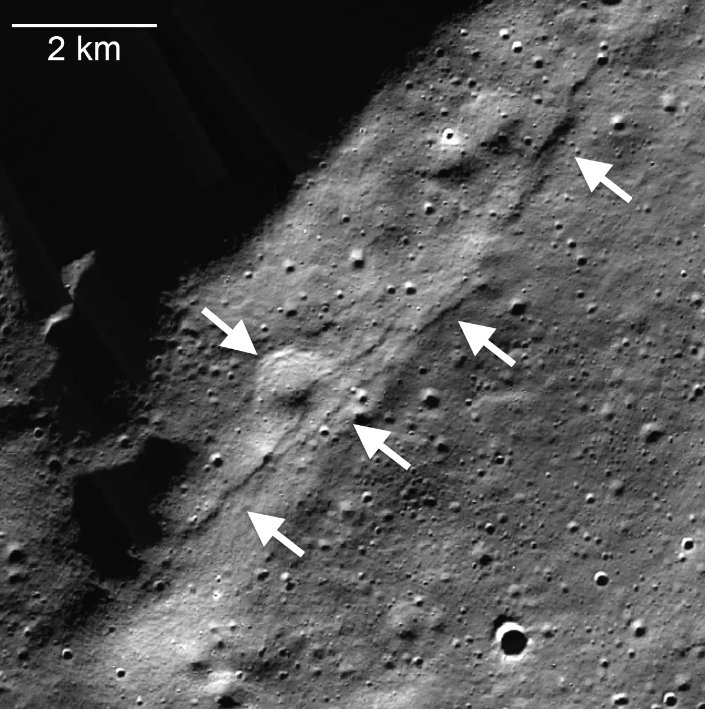
Image credit: NASA/LRO/LROC/ASU/Smithsonian Institution
2024-01-27 solar system
Moon is shrinking and torn by tidal forces from Earth. Evidence for seismic activity has been detected near candidate regions for the Artemis III mission scheduled for a crewed lunar landing. Such quakes can produce ground shaking strong enough for faults to slide or for piling up new thrust faults. The LROC image shows a cluster of lobate scarps (left pointing arrows) near the lunar south pole. A thrust fault scarp cut across an approximately 1-km diameter degraded crater (right pointing arrow). Link to source 🔗
SLIM Imaged by LROC
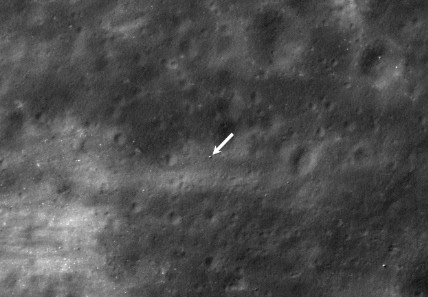
Image credit: NASA/Goddard/Arizona State University
2024-01-27 solar system
NASA’s Lunar Reconnaissance Orbiter captured this image of the JAXA SLIM lander on the Moon’s surface on Jan. 24, 2024. SLIM landed at -13.316° south latitude, +25.2510° east longitude, at an elevation of minus 912 meters. The image is 880 meters wide and lunar north is up. Link to source 🔗
Hubble finds Water in an Exoplanet's Atmosphere
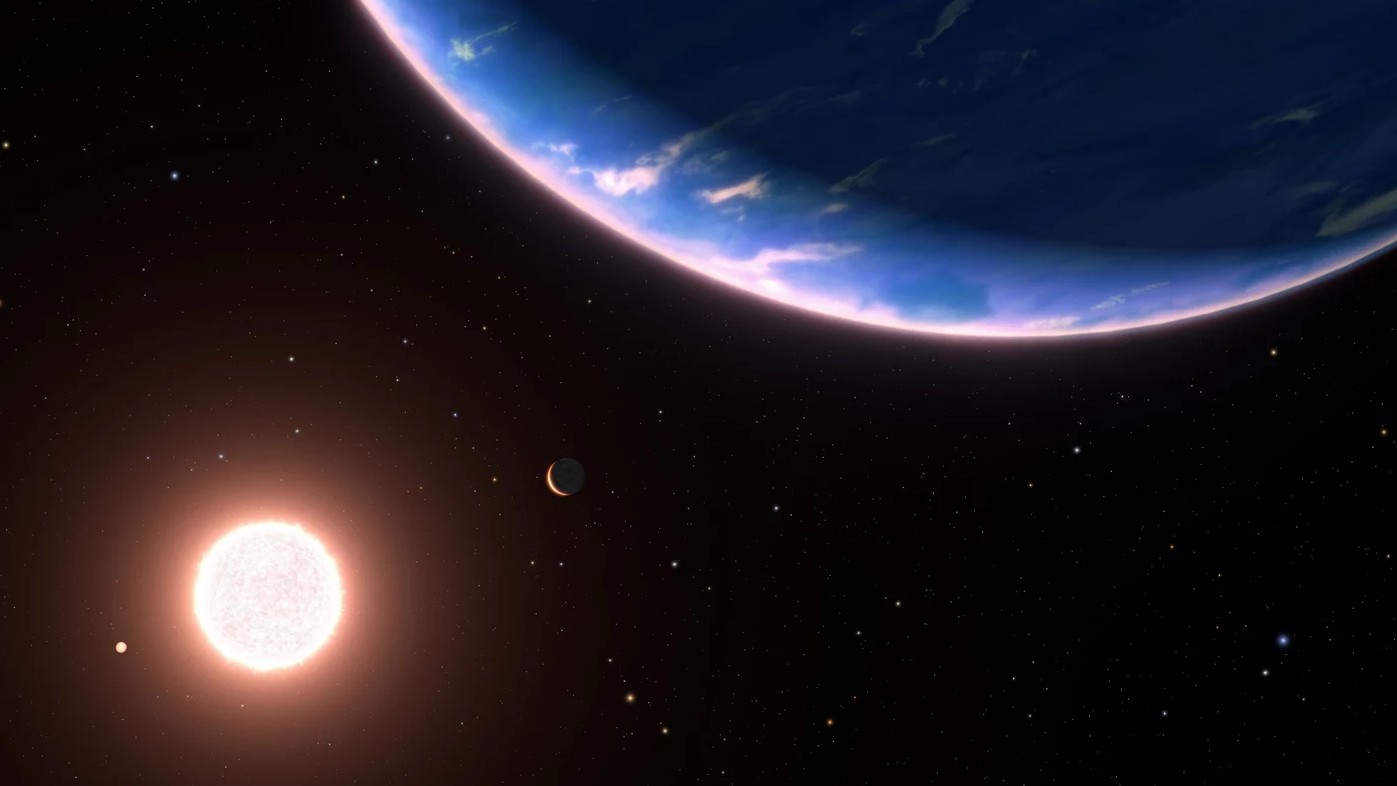
Image credit: NASA, ESA, Leah Hustak (STScI), Ralf Crawford (STScI)
2024-01-26 Exoplanets
Discovered in 2017, the Superterran planet GJ 9827 d is located some 97 light-years away in Pisces and may have a water-rich atmosphere in spite of being hotter than Venus because it orbits extremely close to it host star alongside two further known inner planets. Astronomers will further investigate with the help of the Hubble and James Webb space telescopes. Link to source 🔗
First Light from SLIM
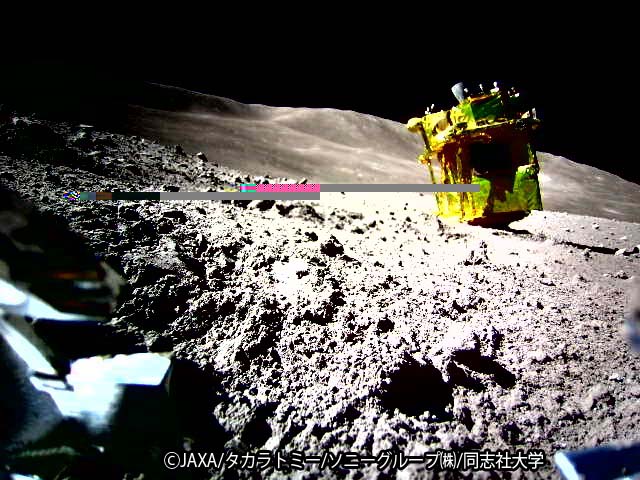
Image credit: JAXA/タカラトミー/ソニーグループ(株)/ 同志社大学)
2024-01-25 solar system
JAXAs lunar lander SLIM has been photographed by its small rover, the Lunar Excursion Vehicle 2 (LEV-2). The soft landing about 55 meters east of target point was completed at 1.4m/sec surpassing specifications. Though the solar panels were supposed to face upwards after landing, on the photo SLIM is shown with its main engine facing upwards, but JAXA hopes it will gather sunlight and restore power until local sunset on Feb 1st. Analysis so far has also revealed that one of the two main engines was lost due to some abnormality at an altitude of 50 meters just before landing. Both exploration rover robots are in good working condition. SLIM landed on the moon at 15:20 on January 19 UTC. Link to source 🔗
Backlog
No, we are not on Facebook but proudly on AstroBin with Mille Gracie to the author Salvatore Iovene:

GoTo Astropical on AstroBin
If anybody is interested in the night life of bats, here is a funny 1-minute MP4 video (24MB).
Legal
In case of abuse or hacking attempts, we reserve the right to report to providers, ISPs and legal authorities. The contents of this site is public, no hidden secrets. The data is backed up in regular intervals.
Cookies
This website does NOT send and use "cookies".
Privacy
Your visit is anonymous. The author processes merely the data that a web browser is typically sending back. The purpose is only for the [Visitors Online] section below.
Free Registration
In order for location dependent data to show correctly you need to register. In the interest of your privacy this website does not automatically retrieve your location via third party services, etc.
Compatibility
Website tested under Windows and Android only. Although largely compatible with smartphones this website is primarily designed for desktops, note books and tablets. This applies in particular to database tables. Double click on page top banners to remove them.
Monitor Calibration
Please adjust your monitor's gamma and contrast, etc. if you cannot distinguish all shades of gray. Click for an enlarged color pattern.

URL Request
If you do not wish to register (no problem) but need to see data for your location only once or so, then you can add the following string to the URL:
?lat=xx.xxx&lon=xxx.xxx&tzn=z.zz
where xx.xxx need to be replaced by your geographic coordinates, z.zz with your time zone. This data will not be stored.
This 'once-view' will work for most pages, such as Planisphere, Deepsky Observer, Ephemerides and Today Monitor.
Last visit from: US

on page astrocam.php using Windows O/S.
Unique visitors today: 108 (since 0:00 UTC) from:
























Newest flag:  Iraq -- Welcome!
Iraq -- Welcome!
Total page views 8248 since 2024-05-01
from 76 different countries (excluding bots & idiots).











































































Operating SystemsWindows: 2474Linux: 2016 Android: 1578 Macintosh: 885 iPhone: 585 Other: 503 Unknown: 110 iPad: 81 Playstation: 11 Chrome OS: 5 |
Most Visitedhipparcos.php: 1134timeslip.php: 1077 nexstar.php: 1038 starref.php: 767 globe_index.php: 705 index.php: 524 nikond5300.php: 485 mpccoms.php: 422 messier.php: 359 caldwell.php: 327 |
Site Updates
- 2024-01-09 • Exoplanets with PHL/HWC
- 2023-12-27 • Tomytec Borg telescopes added.
- 2023-12-23 • Takahashi telescopes added.
- 2023-12-21 • Asteroid Dinkinesh & Didymos added.
- 2023-12-18 • Telescopes for AP updated
- 2023-12-02 • Libration calendar 2024 uploaded
- 2023-12-01 • Ephemeris updated for 2024
- 2023-11-16 • Libration data for 2024 updated
- 2023-11-14 • Review BKP150 updated
- 2023-11-13 • Review TS71SDQ updated
- 2023-09-18 • Page Optical Train added
- 2023-10-21 • New PDF brochure added
- 2023-09-18 • Review: Uranus-C added
- 2023-01-21 • EAA for Starters PDF added
- 2022-11-26 • Favorable Librations added
- 2022-11-26 • Libration calendar PDF2023 added
- 2022-11-25 • Online Libration calendar updated
- 2022-11-24 • Ephemerides updated for2023
- 2022-07-19 • Minima of Algol corrected
- 2022-06-28 • Periodic Table of Sensors added
- 2022-06-28 • Fixes in API Reference
- 2022-06-26 • Astrocam updates and corrections
- 2022-04-08 • Maintenance paused due to accident.
- 2022-02-05 • Android Apps added for download.
- 2022-01-16 • Lunar Imaging brochure added.
- 2021-12-30 • Overdue updates and fixes
- 2020-10-20 • Lunar Imaging site added
- 2020-08-25 • Review: ZWO ASI462MC
- 2020-03-05 • The Current Moon
- 2020-02-09 • Review: ZWO ASI290MM

Deepsky Overview
My Humble Gallery
Lunar Imaging
FOV Simulator
Astro Cameras
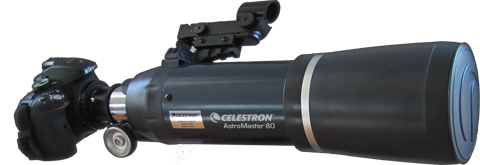
Let's Astrophoto
Telescopes for AP
Total Exoplanet Count: 5626
Kepler/K2: 3322 planetsTESS: 442 planets
Latest exoplanet around:
as of 2024-05-08
| Constellation | Taurus |
| Distance | 117.44 parsec |
| Known planet(s) | 1 |
Acton Sky Portal Observatory 2
Anglo-Australian Telescope 36
Apache Point Observatory 1
Arecibo Observatory 3
Atacama Large Millimeter Array (ALMA) 1
Bohyunsan Optical Astronomical Observatory 26
Calar Alto Observatory 20
Cerro Tololo Inter-American Observatory 5
CHaracterising ExOPlanets Satellite (CHEOPS) 3
CoRoT 35
European Southern Observatory 3
European Space Agency (ESA) Gaia Satellite 10
Fred Lawrence Whipple Observatory 6
Gemini Observatory 9
Haleakala Observatory 2
HATNet 67
HATSouth 73
Haute-Provence Observatory 66
Hubble Space Telescope 6
Infrared Survey Facility 1
James Webb Space Telescope (JWST) 1
K2 548
KELT 10
KELT-North 7
KELT-South 4
Kepler 2774
Kitt Peak National Observatory 1
KMTNet 91
KOINet 1
La Silla Observatory 284
Large Binocular Telescope Observatory 3
Las Campanas Observatory 29
Leoncito Astronomical Complex 1
Lick Observatory 36
Lowell Observatory 3
Mauna Kea Observatory 1
McDonald Observatory 31
MEarth Project 2
MOA 29
Multiple Facilities 18
Multiple Observatories 306
NASA Infrared Telescope Facility (IRTF) 1
Next-Generation Transit Survey (NGTS) 3
OGLE 101
Okayama Astrophysical Observatory 36
Palomar Observatory 2
Paranal Observatory 45
Parkes Observatory 2
Qatar 10
Roque de los Muchachos Observatory 32
South African Radio Astronomy Observatory (SAR 1
SPECULOOS Southern Observatory 1
Spitzer Space Telescope 4
Subaru Telescope 11
SuperWASP 113
SuperWASP-North 5
SuperWASP-South 32
Teide Observatory 1
Thueringer Landessternwarte Tautenburg 8
Transiting Exoplanet Survey Satellite (TESS) 442
TrES 5
United Kingdom Infrared Telescope 2
University of Canterbury Mt John Observatory 1
Very Long Baseline Array 1
W. M. Keck Observatory 188
WASP-South 11
Wide-field Infrared Survey Explorer (WISE) Sat 1
Winer Observatory 1
Xinglong Station 2
XO 6
Yunnan Astronomical Observatory 3
Next NEO Approach
2024 JQ12 on 2024-May-13 11:18 UTC at 4.6609 LD
Random Objects
Gacrux (Gam Cru) in Cru [HIP 61084]
Distance: 88 light-years, Magnitude: 1.59
The Southern Cross reddish-orange star Gacrux is becoming a red giant. It's atmosphere is enriched with barium hinting on an undetected white dwarf companion. Gacrux represents the State of Bahia on the flag of Brazil.
Star Chart | DSS IR Image 🔗GJ 752 A (Wolf 1055 A ) in Aquila
Distance: 19 light-years, Magnitude: 9.1
Gliese 752 is an astrometric binary pair both type M red dwarf stars separated by about 435AU. The primary has 0.46 solar masses and measures 0.546 solar radii.
Star Chart | DSS IR Image 🔗

M83 (Galaxy) in Hydra
Magnitude: 8
M83 is classified as between an intermediate and normal barred spiral galaxy with well formed spiral arms, dust lanes, a central bar and strong nucleus.
Star Chart | DSS IR Image 🔗Crux (southern), area rank: 88

Located amid the Milky Way, this constellation forms a cross with its 1st-magnitude stars Acrux and Becrux alongside a 2nd-magnitude and a 3rd-magnitude star. It is the smallest constellation in the sky, but well known as the Southern Cross. It can be seen at northern latitudes below 25 degrees. The five brightest stars are printed on the flag of Brazil to represent 5 of its 27 states. Crux can also be found on many other country flags, such as AUS, NZ and Papua New Guinea.
Star Chart153P/Ikeya-Zhang

Discovered in 2002, 153P/Ikeya-Zhang is a long-periodic comet with the longest known period (366.5 years) for returning comets. On March 18, 2002, the comet last passed perihelion and became the brightest comet since 1997 shining at 3.5 magnitudes. The comets aphelion distance is at over 100 AU away through the Kuiper Belt reaching into the innermost section of the Oort Cloud.
Myrrha (Asteroid)
Semi-major: 3.21900 AU, Size: 120.58 km

Discovered on Jan 10, 1894 by French astronomer Auguste Charlois, 381 Myrrha is an over 120km wide large C-type main belt asteroid, probably composed of carbonaceous materials and rotating around its axis once in 6.572 hours.
Galatea (moon of Neptune)

Discovered in 1989 in Voyager 2 images, Galatea is the fourth closest inner satellite of Neptune, of highly irregular shape - 204 x 184 x144 km. Galatea's orbit lies below Neptune's synchronous orbit radius and is slowly spiraling down and will eventually impact or break up into a ring.
HD 96700 b (in Hydra)
Mass: 0.028 xJup
SMA: 0.0777 AU
Period: 8.1245 days
Distance: 25.4111 parsec
Category: Hot Superterran
ESI: 0.217697
Android Astronomy Apps
Tweets by astropical4
3D Visualizations
Solar System
Planets
Mercury | Venus | Venus Radar | Earth | Earth Melted | Earth Cretaceous | Mars | Mars Terraformed | Jupiter | Saturn | Uranus | Neptune | Planet Nine (hypothetical)Dwarf Planets
Ceres | Pluto | Haumea | Makemake | Eris | KBOAsteroids
Vesta | Pallas (fictive) | Juno (fictive) |Planetary Moons
Ariel (Uranus) | Callisto (Jupiter) | Charon (Pluto) | Dione (Saturn) | Enceladus (Saturn) | Europa (Jupiter) | Ganymede (Jupiter) | Iapetus (Saturn) | Io (Jupiter) | Mimas (Saturn) | Miranda (Uranus) | Moon (Earth) | Oberon (Uranus) | Rhea (Saturn) | Tethys (Saturn) | Titan (Saturn) | Titania (Uranus) | Triton (Neptune) | Umbriel (Uranus)Comets
67P/Churyumov-Gerasimenko (takes a minute to download)Exoplanets
Exoplanets
Rocky Terran | Ocean Terran | Hot Terran | Warm Terran | Desert Terran | Water Terran | Second Earth | Cloud Planet | Jovian Planet | Saturnian PlanetEarth
Beautiful Earth
Earth in hi-res (can take a minute to download)Earth at Night
Panoramic view (can take a minute to download)








